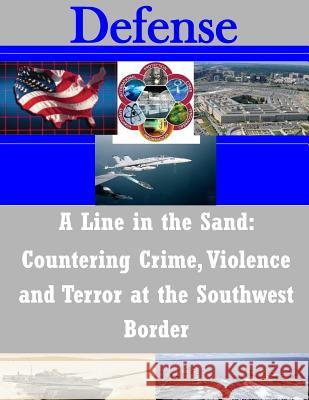A Line in the Sand - Countering Crime, Violence and Terror at the Southwest Border » książka
A Line in the Sand - Countering Crime, Violence and Terror at the Southwest Border
ISBN-13: 9781497551657 / Angielski / Miękka / 2014 / 58 str.
The first edition of A Line in the Sand, released in 2006, (hereafter "first edition") exposed the rising threat of Mexican drug cartels and the vulnerabilities of our porous Southwest border. The horrific violence perpetrated by Mexican drug cartels continues to grow and, in many cases documented in this report, spills into the United States. The cartels now have a presence in more than 1,000 U.S. cities and dominate the wholesale illicit drug trade by controlling the movement of most of the foreign-produced drug supply across the Southwest border.1 This report documents the increased operational control of the cartels inside the United States, their strategy to move illegal drugs, and the bloody turf wars that have taken place between rival cartels, as they struggle to control valuable trafficking corridors. Collectively, Mexican Drug Trafficking Organizations (DTO) maintain firm control of drug and human smuggling routes across the U.S.- Mexico border creating safe entry for anyone willing to pay the price. The U.S. Department of Homeland Security, in its most recent assessment, asserts it can control only 44 percent of our border with Mexico. Terrorism remains a serious threat to the security of the United States. The Congressional Research Service reports that between September 2001 and September 2012, there have been 59 homegrown violent jihadist plots within the United States. Of growing concern and potentially a more violent threat to American citizens is the enhanced ability of Middle East terrorist organizations, aided by their relationships and growing presence in the Western Hemisphere, to exploit the Southwest border to enter the United States undetected. This second edition emphasizes America's ever-present threat from Middle East terrorist networks, their increasing presence in Latin America, and the growing relationship with Mexican DTOs to exploit paths into the United States. During the period of May 2009 through July 2011, federal law enforcement made 29 arrests for violent terrorist plots against the United States, most with ties to terror networks or Muslim extremist groups in the Middle East. The vast majority of the suspects had either connections to special interest countries, including those deemed as state sponsors of terrorism, or were radicalized by terrorist groups such as al Qaeda. American-born al Qaeda Imam Anwar al Awlaki, killed in 2011, was personally responsible for radicalizing scores of Muslim extremists around the world. The list includes American-born U.S. Army Major Nidal Hassan, the accused Fort Hood gunman; "underwear bomber" Umar Faruk Abdulmutallab; and Barry Bujol of Hempstead, TX, convicted of providing material support to al Qaeda in the Arabian Peninsula. In several documented cases, al Awlaki moved his followers to commit "jihad" against the United States. These instances, combined with recent events involving the Qods Forces, the terrorist arm of the Iranian Revolutionary Guard Corps, and Hezbollah, serve as a stark reminder the United States remains in the crosshairs of terrorist organizations and their associates.
Zawartość książki może nie spełniać oczekiwań – reklamacje nie obejmują treści, która mogła nie być redakcyjnie ani merytorycznie opracowana.











